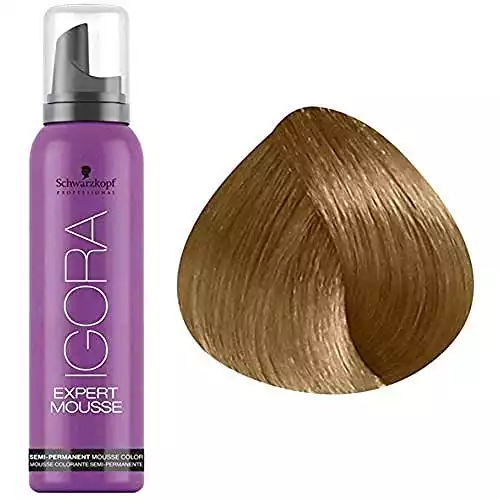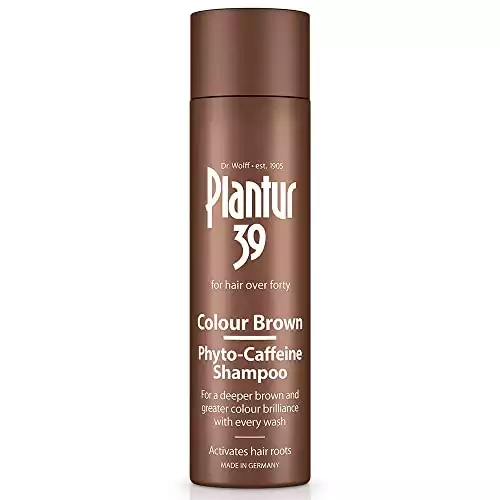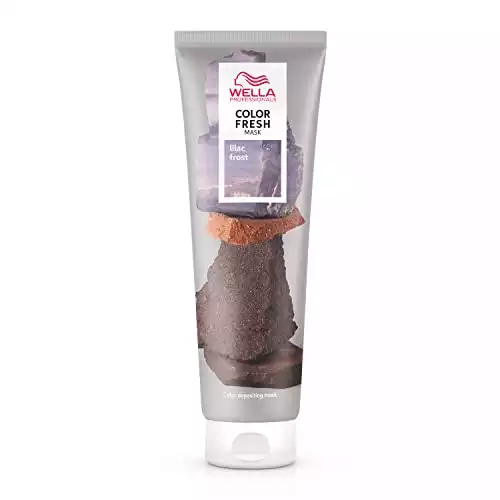Jump to:
Everyone will eventually start to go gray. Some people choose to dye it to match the original color that still exists, while others choose to let it be.
Either way, you might be concerned about the best professional hair color to use to cover gray hair or whether you can buy store-bought hair color and do it yourself at home.
Read on to see details about which color is the best for the job and why you should be using professional hair color over store-bought dye kits.
What Is Professional Hair Color?
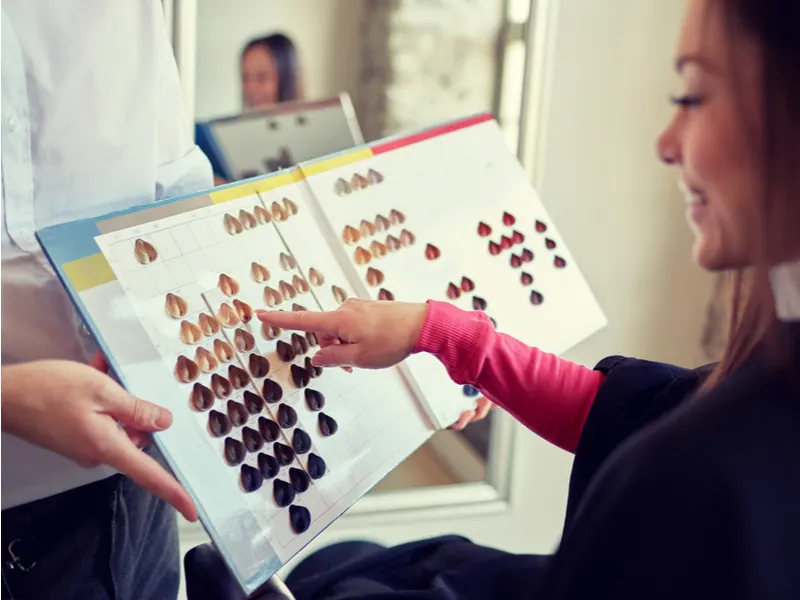
Syda Productions/Shutterstock
Professional hair color, also called salon hair dye, is different from your at-home store-bought boxed brand hair color. Store-bought hair color is meant to be a one-size-fits-all, meant to work on hair ranging from dark brown to light blonde.
This means that the lifting agent used in these store-bought brands is often depositing the highest amount allowed in salons – sometimes even higher! Unfortunately, doing this can cause over-processing of your hair and can cause damage (called a chemical cut).
Color lifting or stripping agents do as they say on the tin – they strip or “lift” some (or most) of the natural pigment from your hair so that you can deposit colored dye back into it.
The higher the level of lifting agents like ammonia, the lighter your hair will become. But it will be more dry and damaged. That’s why store-bought boxed-brand hair color is so dangerous for your hair.
On the other hand, professional hair color is meant to cater to your hair’s specific natural color, porosity, density, and elasticity so that damage is minimized, making professional hair color safer for your hair.
As a result, professional hair color brands are made with the client’s specific needs in mind, not their wallets.
You Might Also Like:
- How to Grow Out Gray Hair That Is Colored
- Why Won’t My Grey Hair Dye?
- How to Cover Gray Roots Between Salon Visits
The Chemistry of Gray Hair and Hair Color
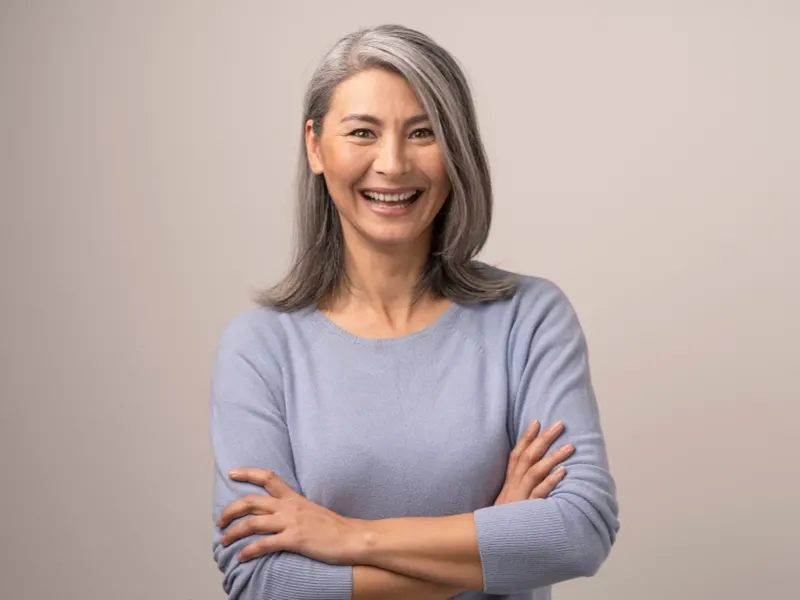
Lipik Stock Media/Shutterstock
Hair is made up of keratin, the same protein found in your skin and fingernails, but keratin has nothing to do with hair color (keratin itself is naturally light yellow in color).
Before hair turns gray, its color results from the ratio and quantities of two out of three other proteins called melanocytes: eumelanin and pheomelanin. The former is responsible for brown to black hair shades, while the latter is responsible for golden blond, ginger, and red hues.
The absence of both of these proteins produces white or gray hair. According to Biochemistry, Melanin, varying degrees of black and brown eumelanin results in black and brown hair.
A small amount of brown eumelanin and the absence of black eumelanin results in blonde hair. Roughly equal amounts of pheomelanin and eumelanin results in red hair.
Read Next: What the Heck Causes Grey Hair?
Types of Hair Color
There are a handful of different types of hair colors that are used to dye hair. First, there are natural hair colorants, which people have been using for thousands of years.
In short, these use natural agents that contain pigments (such as henna or black walnut shells) that work by coating the hair shaft with color. Some of these natural colorants can even last through several rounds of shampoo!
Then there are temporary hair colors, also known as semi-permanent hair colors. They deposit acidic dyes on the outside of the hair shaft. Alternatively, they consist of small pigment molecules that can go inside the hair shaft with the help of peroxide.
These temporary hair colors can also last through several rounds of shampoo, but the color molecules will eventually be dislodged with enough washing.
Because these products don’t contain ammonia, the hair shaft doesn’t open during processing, and the hair maintains its natural pigment.
Then there is hair lightening with bleach, which reacts with the melanin in the hair by oxidizing the melanin molecule, removing its natural pigment, and making it colorless.
As a result, bleached hair does not turn white but retains a light yellow tint, the natural color of keratin, the protein of which hair is made.
Remember eumelanin and pheomelanin? Bleach reacts more readily with eumelanin than with pheomelanin, so some residual gold or red color may remain after lightening.
Finally, there is permanent hair color, in which the outer layer of the hair shaft, the cuticle, is lifted and opened before permanent hair color is deposited. When this happens, the dye reacts with the cortex, the inner portion of the hair follicle, to deposit or remove the natural color.
Ammonia is the alkaline chemical that opens the cuticle, allowing the hair color to penetrate the hair’s cortex. It acts as a catalyst when the permanent hair color combines with the peroxide that oxidizes the hair’s melanin.
Problems With Dying Gray Hair
There are some difficulties with dyeing gray hair because the process of hair graying isn’t just about the color of the hair. The very structure of the hair follicle also changes, dramatically affecting the dyeing process.
As hair begins to gray, follicles generate less oil, making gray hair less supple and more coarse or dry.
This fact makes dying gray hair a lot more complicated as it often produces inconsistent results because not every hair color will prove one-hundred percent gray coverage. To get appropriate results, you must first figure out the amount of grays.
This percentage illustrates the pigmented and non-pigmented hair ratio, determining the type of hair color and shade of hair color suited for your hair and how you should proceed with the dyeing process.
If the percentage of gray hair is greater than twenty percent, you must take special care during the dyeing process.
Types of Professional Hair Color and Shades Best for Gray Hair
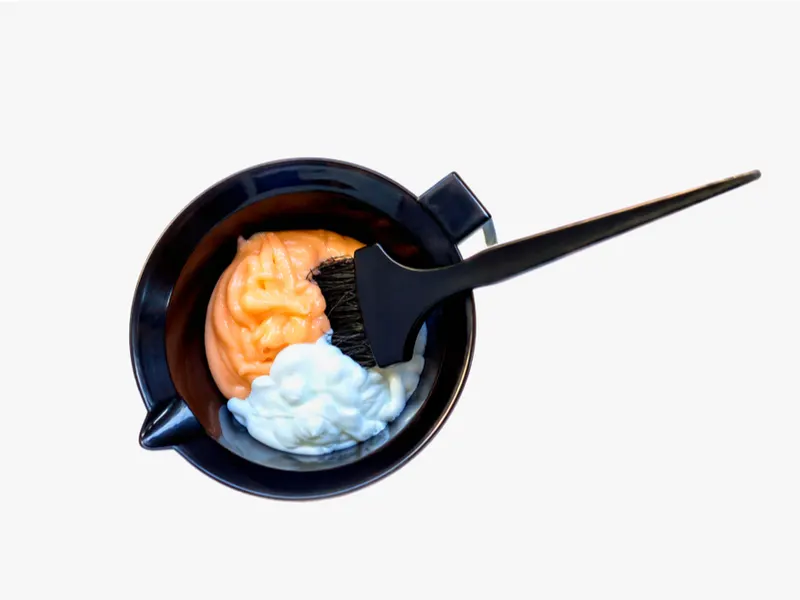
Korelidou Mila/Shutterstock
Now that we’ve learned about the dyeing process, the chemistry of hair color, and the special care needed to dye gray hair, let’s finally talk about the best professional hair color and shades for gray hair.
For First Signs of Gray Color
If you only want to cover the first signs of gray hair, then pigmented hair care and natural hair colorants might be the best option for you. Usually, the effect of these colors lasts until your next wash or maybe a little longer.
Some products that might be useful in this regard are the Schwarzkopf Professional Igor Expert Mousse or the Plantur 39 Color Brown Phyto-Caffeine Shampoo, a shampoo with natural brown pigments.
For Thirty to Seventy Percent Gray
For thirty to seventy percent gray coverage, temporary or semi-permanent hair color might be the suitable dye for the job. A potential good product for the job is Wella Professionals Color Fresh.
Products like these deposit semi-permanent colors that can be washed out over time, meaning you don’t have to worry about new growth. However, you will need to apply the dye more often than you would a permanent hair color
For Seventy to One Hundred Percent Gray
If you are looking for one-hundred percent gray coverage, then permanent hair color might be the way to go. Permanent hair color uses ammonia to lift the cuticle and allows the color to infuse deep into the cortex of the hair follicle.
As a result, the color will cover your gray hair much more effectively while also lasting much longer, allowing you to go longer periods between dyes.
Special Colors for White and Gray Hair
Although there are ways to cover gray hair using natural colorants, semi-permanent dyes, and permanent dyes, the best option for gray hair is special hair colors specially designed for mature, gray hair.
Typically, these special hair colors are better suited to cover gray hair because they keep in mind gray hair’s unique structure.
Usually, they consist of unique complexes of nourishing oils, ceramides (fats or lipids found in skin cells that are important for retaining moisture), and more that will also take care of your hair quality.
These unique hair colors also don’t need to be mixed with basic or natural shades. Some special professional hair colors for gray hair include:
- Redken Chromatics Beyond Cover ODS
- Londa Professional Extra Coverage Demi-Permanent Color
- Matrix SoColor Extra Coverage
- Schwarzkopf Professional Igora Royal Absolutes Silver Whites
- L’Oréal Professionnel Inoa Supreme
- Schwarzkopf Professional Igora Royal Absolutes
Best Shades for Dying Gray Hair
Unfortunately, not all colors can cover gray hair because many will let the gray color shine through. To cover mature gray hair, it’s best to use colors that are actually natural shades, usually marked by an ‘N’ or ‘0’ (5N, 5NN, Natural, 5, 5.0, or 5.00, for example).
Other more trendy shades that are not natural are typically not suitable for covering gray hair because these unnatural colors let gray hair shine through. However, not all is lost if you want a more trendy color.
You can mix the artificial color with some natural color of the same level of shade or depth, modifying the unnatural color to be more even and neutral.
When dyeing gray hair, it’s also better to use a lighter color tone than the original color because dark shades on gray hair can often look rough. Furthermore, gray hair tends to absorb cooler pigments more readily while rejecting warmer pigments, such that ashy shades can appear too cool on gray hair.
Frequently Asked Questions
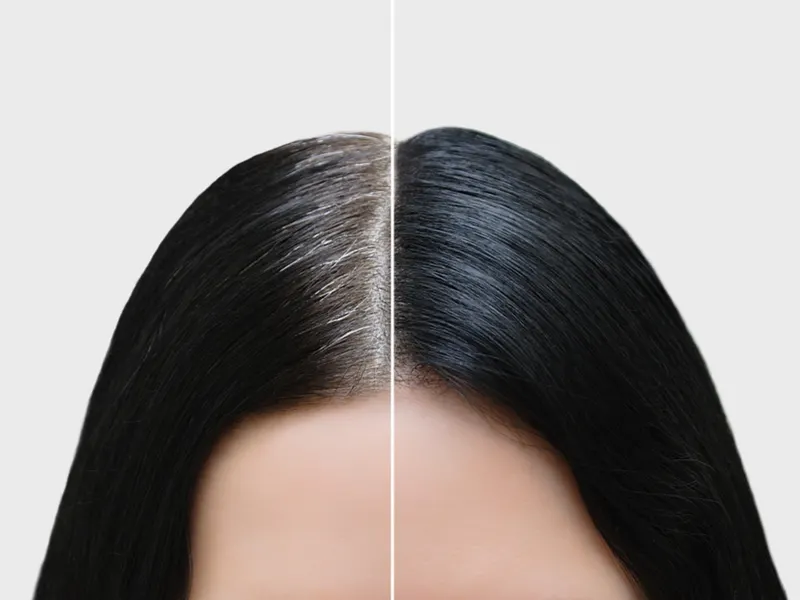
Yuliya Alekseeva/Shutterstock
Here are some answers to some of the most frequently asked questions about gray hair and professional colors.
If you are working with gray hair, the more common six percent developer will be unsuitable. Therefore you should be using a nine percent oxidizing emulsion, which permeates more successfully within the hair follicle, making it better at covering resistant grays. In salons, stylists use semi-permanent or permanent dyes to color the more resistant gray hairs. Gray hair tends to be more resistant to color than younger hair because of its change in texture from the lack of natural oils that makes the surface rougher. As we age, the oil produced by our natural hair dwindles, making our scalp drier and our hair more coarse. Essentially, gray blending or gray camouflage is a low-maintenance color technique that hides gray hairs by adding colors similar to your natural hair shade. It would help to dye your hair roughly every four to six weeks to cover gray hair to combat color fading and new growth.How strong of a developer should you choose?
How do salons cover gray hair?
Why is gray hair resistant to color?
What is gray blending?
How often should I dye my hair to cover gray?
So, What’s the Best Professional Hair Color for Gray Hair?
Professional hair color, especially for gray hair, is a hair color designed specially to fit your hair’s specific needs while considering your hair’s natural shade and melanocyte makeup, porosity, density, and elasticity.
Professional hair color is safer and healthier for your hair because it does not subscribe to a one-size-fits-all method, which does not consider your hair’s specific needs and can often severely damage your hair.

